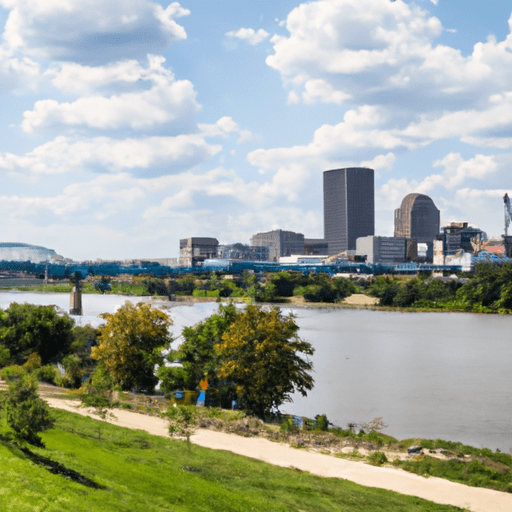Alright, everyone, let’s take a trip to Dayton, Ohio! Once a booming manufacturing city with a thriving population, Dayton has faced significant challenges after the collapse of the manufacturing industry. With almost half of its population lost, the city has had to adapt and diversify in recent years. But don’t let the population decline fool you – downtown Dayton still has a lot to offer! Despite the challenges, the city has managed to maintain a pleasant appearance, with well-kept homes and vibrant colors in its various neighborhoods. Join us on this video tour as we explore Dayton’s downtown area, visit the Wright-Patterson Air Force Base, check out the Dayton Arcade, and discover the Oregon District, a developed part of the city with plenty of shops and entertainment options. Despite the population loss, Dayton is still a city worth exploring and appreciating for its rich history and resilience.
Dayton, Ohio: From Manufacturing Boom to Population Loss
Overview of Dayton, Ohio
Dayton, Ohio, once experienced rapid growth and prosperity due to its thriving manufacturing industry. By 1960, the city’s population had reached 262,000. However, like many other cities in the region, Dayton faced the collapse of its manufacturing sector. As a result, the city has lost nearly half of its population over the years. Despite these challenges, Dayton has started to diversify its economy in recent years. Today, the city is known for its revitalized downtown area and its efforts to stabilize and bring new life to its neighborhoods.
Population and Demographics
As of the latest statistics, Dayton, Ohio, has a population of 137,000, with a metro area population of 814,000. The median age in the city is 42, and the population is relatively balanced in terms of gender, with 53% female and 47% male. In terms of race, the breakdown is 48% White, 37% Black, 6% Hispanic, and 2% Asian. These demographic figures showcase the diversity within the city and the blending of different cultures and backgrounds.
Economic Factors
Dayton’s economy has been significantly impacted by the decline of its manufacturing industry. The per capita income in the city is relatively low, at $21,500 per year. The median household income is $39,315 per year. While these figures are below the U.S. average, Dayton’s cost of living is also lower, making it an affordable place to live. However, the poverty level in Dayton is high, with 28% of the population living below the poverty line. This is more than double the U.S. average.
Crime Rates
Dayton, Ohio, unfortunately, has higher crime rates compared to the U.S. average. The total crime rate in the city is 46 incidents per 1000 people, while the U.S. average is 23 incidents per 1000 people. The violent crime rate in Dayton is 10.1 incidents per 1000 people, compared to the U.S. average of 3.9 incidents per 1000 people. Property crime in Dayton is slightly lower than the national average, with a rate of 36 incidents per 1000 people compared to the U.S. average of 20 incidents per 1000 people.
Housing Market
One area where Dayton stands out is its housing market. The median home value in Dayton is $85,000, which is significantly lower than the U.S. average of $281,000. This relatively low home value means that it is more affordable for individuals and families to purchase homes in Dayton. The lower cost of housing can also attract individuals who are seeking a more affordable cost of living without compromising on quality.
Historical Significance
Dayton, Ohio, has a rich historical significance, particularly in the field of aviation. The city is often referred to as the birthplace of aviation, as it is where the Wright brothers, Orville and Wilbur Wright, developed and tested their aircraft. Orville Wright was born in Dayton, and the Wright-Patterson Air Force Base, located nearby, is one of the largest military bases operated by the Air Force.
Key Landmarks and Attractions in Dayton
When visiting Dayton, there are several key landmarks and attractions to explore. The Montgomery County Old Courthouse, with its Greek Revival architecture, is a beautiful historic building that showcases the city’s history. The downtown area also features the Oregon District, a developed area with shops and entertainment options. Additionally, the Dayton Arcade, a collection of nine buildings, has been renovated and is now home to businesses and residents. These landmarks and attractions offer a glimpse into Dayton’s past while also highlighting its efforts to rejuvenate the city.
Neighborhoods in Dayton
Despite the population loss, Dayton has managed to maintain vibrant and well-kept neighborhoods. Many neighborhoods in the city feature historical homes and buildings with vibrant colors and unique architectural styles. These neighborhoods showcase the community’s pride and dedication to preserving its heritage. Each neighborhood has its own distinct charm and character, making Dayton a city of diverse and appealing neighborhoods.
Diversification and Stabilization of the Economy
In recent years, Dayton has begun diversifying its economy to mitigate the impact of the decline in manufacturing. The city has attracted new industries and businesses, including technology, healthcare, and aerospace. This diversification has brought stability and new opportunities to the local economy. Dayton’s efforts to revitalize its downtown area and support local businesses have also contributed to the city’s economic stabilization and growth.
Conclusion
Despite facing significant challenges and a decline in population, Dayton, Ohio, is striving to rebuild and reinvent itself. The city’s diverse population, historic landmarks, and revitalized neighborhoods contribute to its unique identity. With a focus on economic diversification and community development, Dayton is positioned to continue its path toward renewal. As visitors explore the city and learn about its rich history and promising future, they will be pleasantly surprised by what Dayton has to offer.
